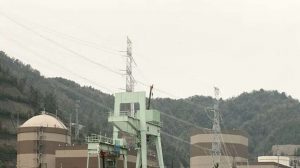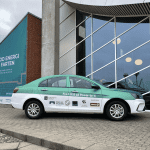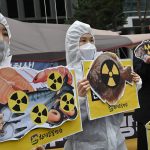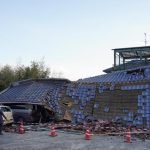Japan approves nuclear energy U-turn to avert crisis
日本批准重启核电以解决严重电荒
Japan has approved a plan to revive the use of nuclear energy, redrafting an energy policy that has been paralysed since the 2011 Fukushima crisis to address a serious electricity shortage.
日本批准了重启核能利用的计划,改写自2011年福岛危机以来瘫痪至今的一项能源政策,以解决严重的电力短缺。
The U-turn in nuclear policy, first signalled by Prime Minister Fumio Kishida in August, follows softening public opposition to restarting reactors after repeated blackout scares in Tokyo this year along with rising electricity bills.
日本首相岸田文雄(Fumio Kishida)于8月首次发出核能政策逆转的信号。此前,面对今年电费上涨、而东京多次遭遇停电恐慌,日本公众对重启反应堆的反对态度有所软化。
Under a new policy outlined by an advisory panel for the government on Thursday, the country would “maximise the use of existing nuclear reactors” by accelerating restarts in a reversal of a post-Fukushima plan to phase out the use of nuclear power plants.
根据政府顾问小组周四公布的一项新政策,日本将加速重启反应堆,以“最大限度地利用现有核反应堆”,从而逆转福岛事故后出台的逐步淘汰核电站的计划。
It would also extend the lifespan of nuclear reactors beyond 60 years and develop advanced reactors to replace those that are decommissioned.
按照新政策,日本还将延长现在为60年的核反应堆使用寿命,并开发先进的反应堆来替换退役的反应堆。
Japan sourced about a third of its energy from 54 nuclear reactors before the Fukushima disaster. Now, only nine are operational, forcing the country to burn additional coal, natural gas and fuel oil despite pledges to achieve net zero carbon emissions by 2050.
福岛灾难发生前,日本从54个核反应堆获得约三分之一的能源。目前只有9个反应堆在运行,迫使该国燃烧更多的煤炭、天然气和燃料油,尽管它承诺到2050年实现净零碳排放。
“There is a risk of an energy crisis for the first time since the 1973 oil crisis in the face of a severely tense situation,” said the 10-year road map released by the panel, citing the global rise in energy prices following Russia’s invasion of Ukraine.
“面对严重紧张的形势,自1973年石油危机以来首次存在爆发能源危机的风险,”该小组发布的10年路线图称。它指出俄罗斯入侵乌克兰后全球能源价格上涨。
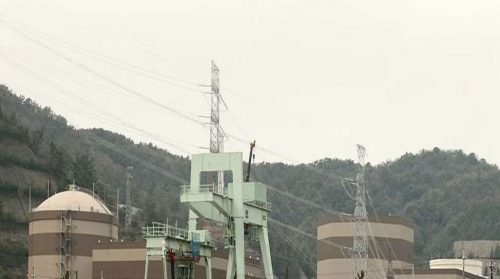
“We recognised once again the fragility of our country’s energy supplies, which poses a challenge to our energy security,” it added.
“我们再次认识到我国能源供应的脆弱性,这对我国的能源安全构成挑战,”它补充称。
Japan’s effort to accelerate nuclear restarts is also driven by the need to reduce carbon emissions as it struggles to meaningfully increase the use of renewable energy.
日本加快核反应堆重启的努力,也是出于减少碳排放的需要,尤其是因为该国难以有意义地增加可再生能源的使用。
The road map states that renewable energy and nuclear power “will contribute to security” and help the country achieve both the goal of net zero emissions and a stable supply of electricity.
上述路线图指出,可再生能源和核电“将为安全做出贡献”,帮助日本实现净零排放和稳定电力供应的双重目标。
The government plans to invest more than ¥150tn ($1.1tn) together with the private sector in the coming decade to achieve its target. Of that amount, it will raise ¥20tn by issuing a new type of bond to attract private investment. Carbon pricing, which requires a monetary contribution for greenhouse emissions, will be used to finance the redemption of such bonds.
为实现其目标,日本政府计划在未来10年联手私营部门一起投资逾150万亿日元(合1.1万亿美元),其中包括发行一类新型债券筹集20万亿日元以吸引私人投资。碳排放定价机制——要求排放者为其温室气体排放缴费——将被用于为此类债券的赎回提供资金。
But experts say a series of hurdles remain in reviving nuclear power. Utility companies have few incentives to build next-generation nuclear reactors, which will cost about ¥1tn each.
但专家们表示,重启核电仍存在一连串障碍。公用事业公司没什么动力建造单个成本高达约1万亿日元的下一代核反应堆。
“Extending the operation of the existing reactors could in turn hold back the construction of advanced reactors,” said Takeo Kikkawa, a professor at the International University of Japan and a member of the government’s energy council.
“延长现有反应堆的使用寿命,可能反而会阻碍先进反应堆的建设,”日本国际大学(International University of Japan)教授、政府能源委员会成员橘川武郎(Takeo Kikkawa)表示。
“To achieve carbon neutrality for 2050, now is the last chance to get the stalled nuclear policy finally moving,” he added.
“为了在2050年实现碳中和,现在是让陷于停滞的核能政策终于启动的最后机会,”他补充说。

